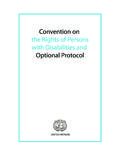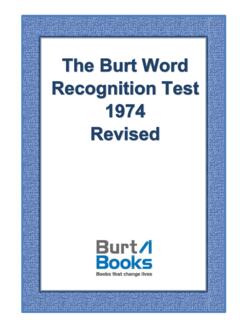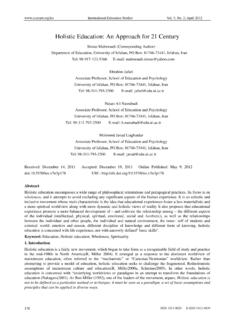Transcription of From the SHRM/Globoforce Survey 2015 EMPLOYEE …
1 RESEARCH REPORT2015 EMPLOYEE recognition REPORTCULTURE AS A COMPETITIVE DIFFERENTIATOR From the SHRM/Globoforce Survey2015 EMPLOYEE recognition Report // 2 more than ever, companies are focusing on culture as a competitive differentiator. They re seeing first-hand how cultivating the right culture can engage, nurture, and attract employees and ultimately, increase bottom line business results. And for more companies than ever before, that best-in-class culture is predicated on recognition and appreciation. globoforce conducts an annual Survey in collaboration with the Society for Human Resource Management to elicit trends and insight from HR leaders and practitioners about their top workforce challenges and strategies to help address them. This 2015 report examines best practices in EMPLOYEE recognition , unpacking what companies expect from EMPLOYEE reward and service anniversary programs, and what results they are experiencing.
2 We looked in particular at these questions:* What are the top issues facing HR leadership today?* What are the most common practices around recognition and years of service programs?* What are the results companies are experiencing from values-based recognition programs?* What is the impact of service milestone programs?EXECUTIVE SUMMARY2015 EMPLOYEE recognition Report // 22015 EMPLOYEE recognition Report // 3 OUR FINDINGS WERE 1. The top three challenges faced by HR organizations today are turnover, EMPLOYEE engagement, and succession Values-based EMPLOYEE recognition is seen as significantly contributing to bottom-line organizational metrics. 3. Values-based recognition programs are helping employers create a stronger culture and more human Few companies have chosen to adopt gamification and eThanks in their recognition The top objective for years of service programs is EMPLOYEE appreciation, but many programs still fall short of the mark for inspiration and Organizations that invest in EMPLOYEE recognition and years of service programs experience better EMPLOYEE recognition Report // 41 / The top three challenges faced by HR organizations today are turnover, EMPLOYEE engagement and succession planning.
3 In 2013 and in 2012, when we asked this same question, EMPLOYEE engagement and succession planning topped the list of HR concerns. While they are still some of the top three challenges listed, it seems that growing concerns about turnover have finally overtaken them both. This is perhaps a sign of the growing war for talent, as anxiety about recruitment has also risen to number four on the list. This likely reflects broader economic news of a strengthening job market. According to Bureau of Labor Statistics, there were million job openings in April 2015 , the most in 15 years. There were also million hires in April, near recent highs. Most telling was that for the first time ever since the BLS started tracking openings in 2000, employers reported more job openings than strengthening job market means that more jobs are being filled, and many previously cautious employees may jump back into an active job search.
4 Companies will need to take steps to ensure they don t lose valuable employees in the company year. This is likely why retention, recruitment and succession are rising tides in the organizational EMPLOYEE recognition Report // 42015 EMPLOYEE recognition Report // 5 FIGURE 1 TOP ORGANIZATIONAL CHALLENGES CITED BY HR PROFESSIONALSTURNOVERFor years, analysts have been predicting a coming War for Talent, when demand for skilled labor will outstrip supply especially true in technology and skilled manufacturing trades. Lower unemployment rates, combined with population fluctuation and the retirement of more baby boomers, likely means that this talent shortage is beginning to be felt. 40 percent of companies are reporting loss of personnel as a top concern.
5 (Another 29 percent are stressed about finding replacement talent.) EMPLOYEE ENGAGEMENTE mployee engagement is, for the third Survey in a row, near the top of the list for HR challenges. However, in this year s Survey there was an 8 percentage point drop from our last Survey (in 2015 , 47 percent of respondents chose engagement as a top concern, versus 39 percent in 2013.) This may be due to incremental growth in overall EMPLOYEE engagement (as reported most recently by Gallup.) Or perhaps more likely it is reflective of the greater availability of resources and tools, such as pulse surveys and recognition programs, to help HR practitioners more effectively measure and proactively manage engagement levels. SUCCESSION PLANNINGMore than a third (35 percent) of the Survey respondents cited succession planning as a top HR challenge.
6 This may reveal pressures brought by lower retention rates as many studies have shown lack of development is a leading driver of turnover. The desire to retain skilled talent and future leadership therefore leads many companies to redouble efforts to promote and train talent from within. HR leaders are looking for better ways to identify high potential employees, key influencers and future leaders within their organizations. Q: What are the most important challenges you currently face in your organization?Note: Percentages do not equal 100% due to multiple response options. An asterisk (*) indicates this response option was not available in 2013. Only organizations with an EMPLOYEE recognition and service anniversary program were asked this retention/turnover39% EMPLOYEE engagement35%Succession planning29%Recruitment24%Culture management22%Performance management22% EMPLOYEE satisfaction14%Relieving EMPLOYEE frustration12% EMPLOYEE enablement - providing11%Productivity9%* EMPLOYEE happiness9%*Employer brand7%Revenue per FTE4%Other33%47%39%26%35%31%18%18%19%10% 10%4%201520132015 EMPLOYEE recognition Report // 62 / Values-based EMPLOYEE recognition is seen as significantly contributing to bottom-line organizational metrics.
7 recognition and in particular values-based recognition is driving key metrics, according to HR leaders and practitioners. Survey respondents cite positive impact of their recognition programs on engagement, retention, safety, wellness, employer brand and even cost control the number of recognition programs remained strong, this 2015 SHRM/Globoforce EMPLOYEE recognition Survey found an uptick in the number of programs aligned to company values when compared with 2012. Moreover, companies with recognition programs that are not tied to values are underperforming expectations, while more companies with values-based recognition rated their programs as excellent or 2012, 76 percent of companies reported having recognition programs.
8 Large organizations (25,000 or more employees) were more likely than mid-sized organizations (500 to 24,999 employees) to have an EMPLOYEE recognition program. One-half (50 percent) of all recognition programs were tied to company values. In 2013, that number rose to 81 percent of companies, with 55 percent of companies practicing values-based recognition . This year s Survey also saw 81 percent of companies practicing formal recognition , but the number of companies basing that recognition on values rose to 58 percent from 50 percent in EMPLOYEE recognition Report // 62015 EMPLOYEE recognition Report // 7 FIGURE 2 ADOPTION OF recognition PROGRAMSQ: Does your organization have an EMPLOYEE recognition program? 5%14%22%58%No, but we plan to implementone in the next 12 monthsNoYes, we have a program, but it isnot tied to our organization s valuesYes, we have a program that is tiedto our organization s valuesFIGURE 3 PERFORMANCE OF recognition PROGRAMSQ: Overall, how would you rate your organization s current EMPLOYEE recognition efforts?
9 5%27%54%14%PoorFairGoodExcellent2015 EMPLOYEE recognition Report // 8As companies seek to implement and justify EMPLOYEE reward and recognition , they must connect that investment to a bottom line business benefit. In this year s Survey , a majority of respondents with values-based recognition programs reported that they were able to show these results. In fact those programs reported perceived positive results that were up to 20 percent higher than companies not practicing recognition tied to company values. For example, recognition was perceived to positively impact engagement for 90 percent of respondents practicing values-based recognition , vs. just 67 percent for non-values- based programs. Retention was likewise affected 68 percent of values-based programs perceived a positive impact, vs.
10 41 percent for non-values-based programs. Values-based recognition programs were also more likely to have perceived positive impacts on safety (37 percent), sustainability or cost-control goals (36 percent), and health and wellness goals (29 percent.) Values-based recognition is also proving to be a benefit in building a magnetic employer brand. A full 66 percent of companies with values-based recognition said their recognition program is helping them build a stronger employer brand vs. only 28 percent of those with non-values-based EMPLOYEE recognition Report // 82015 EMPLOYEE recognition Report // 9 FIGURE 4 STRONG PERCEIVED IMPACT OF VALUES-BASED RECOGNITIONQ: In your professional opinion, does your EMPLOYEE recognition program:say it positively impacted engagement, vs. 67% without a values-based recognition program90%say it positively impacted retention, vs.












